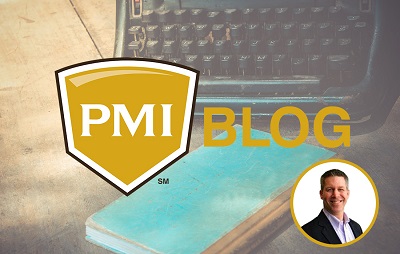
As a property manager, one of the important tasks we deal with, is getting a client’s rental property “rent ready”. This quite often requires coming to a mutual understanding of what repairs, updates and upgrades are required for the property. What exactly does “rent ready” mean though and does this differ based on the type of property, single family vs multi-family, or geographic location? Before I answer that question, I would like you to think about going on vacation and walking into the hotel at your destination. You will be staying there for 2 weeks and the cost is a major part of your vacation budget. What would your impression be if when you walked into the lobby, you were greeted with what smelled like the locker room of a sports team after a major game on the hottest day of the summer? How would you feel about the quality of the service in the hotel if when you looked around you noticed the paint was dirty and scuffed, floors and carpets were worn out and the windows didn’t appear to have been cleaned….ever. But that was just the lobby, as you cross the threshold into your room, it looks like something straight out of the 1990’s and has the aroma of cigarettes and wet dog. Would you be happy paying top dollar to stay in that hotel? Would you even stay there? Would you feel confident you will receive quality service during your stay? Most likely not, but this concept carries over 100% to rental properties, whether short-term or long-term rentals.

As a property management company, when we evaluate a property to determine if it’s “rent ready”, we are evaluating it from a few different perspectives:
- Compliance to municipal and state fire regulations and habitability standards;
- General safety and security;
- End of life evaluation of critical mechanical components
- Essential upgrades to maximize rental income potential
- General aesthetics and marketability
Let’s look at each of these in a little more detail to start to answer the question of what is “rent ready”:
Compliance to municipal and state fire regulations: Based on the current regulations at the time of this article, we are evaluating the property to ensure that it has the required number of smoke and carbon monoxide detectors mounted in the proper locations throughout the rental property. While this is governed by New Jersey State Law, some municipalities may have additional requirements, so you should always check with your local Fire Prevention Department to verify what is required. In addition to having the correct number of units, we are also evaluating to ensure they are of the 10-year sealed battery type or if AC powered, that they have 10-year batteries installed. The units are also checked to make sure that they are not older than 10 years or very close to that 10-year mark, which would require them to be replaced. The last major item to be checked is the fire extinguisher, which must be mounted in or very close to the kitchen and must be a 2-A:10-B-C rated fire extinguisher. If the fire extinguisher is pre-existing, then it needs to be inspected by a reputable fire equipment service provider and tagged or replaced with a new unit and receipt available for the fire inspector.
General safety and security: When we evaluate a rental property from the safety and security perspective, we operate all doors and windows to ensure they lock and that windows stay up on their own and screens are in place. Entry doors are always rekeyed to maintain a level of security for the property and new tenants. A visual assessment is done of all outlets, switches, electrical fixtures and components to look for missing or broken cover plates, frayed wires, and outdated fuse/breaker boxes. An electrical tester is used to verify outlets are working. If the garage has an automatic opener, the door is operated to test the safety sensors. Lastly, as of July 2022, the State of New Jersey requires all properties built prior to 1978 to be tested for lead every 2 years or at tenant turn-over, whichever comes first. Depending on the municipality, the test will differ from either a visual inspection or actual wipe sampling by the municipality or a certified 3rd party tester.
End of life evaluation for mechanical components: This evaluation is really centered around the hot water heater, sump pump and HVAC system. In general, hot water heaters have a lifespan of around 10 years. In locations with very hard water, this can be reduced to 7 or 8 years. If a water heater is close to that time frame, a vacancy is the ideal time to change it before it springs a leak and becomes an emergency repair with property damage. Sump pumps should be tested to ensure the floats move freely and that they drain properly to the exterior of the property and away from the foundation. This is especially important if the basement areas are usually dry and the sump pump is not activated on a regular basis. Pouring a couple of buckets of water into the pit can be an effective method of testing. If the rental property has a central heating or air conditioning system, the filters should be checked to ensure they are clean and on average should be replaced every 3 months. When replacing the filters, write the date installed on them so you can date them later. While not necessarily an end-of-life evaluation, all the appliances should be run through a full cycle to ensure they are working correctly and repaired or replaced as needed.
Essential upgrades to maximize rental potential: When we perform a rental analysis to determine the rental rates, we are assessing the subject property against the “competition” to determine how the properties compare. This is when we determine what types of upgrades may be needed to maximize the rental income potential for the property. This may include simple items such as updating appliances, countertops, light fixtures or replacing doors; or it may signal the need for more comprehensive renovations to flooring, bathrooms or kitchen.
General Aesthetics and Marketability: Remember that hotel we described earlier? This is exactly how we are looking at the rental property now, which is from an aesthetic perspective and determining how marketable the property is. Is the paint a modern and neutral color? Do the walls have holes in them? Are the floors and/or carpets in good condition? Has the carpet been cleaned after the previous occupant moved out and repairs completed? Has the property been professionally “deep cleaned”? Does the property smell fresh and pleasant? (This is where an Ozone Machine can be a life-saver if the property had pets or a smoker previously). Is all maintenance completed? Are all appliances working? Are all light bulbs working? Is the property ready for a new tenant to move in immediately?
If the answer to all these questions is “Yes”, then the rental property is “Rent Ready”, which means it is also “Market Ready”. Our philosophy is to only put a property on the market once it is “rent ready”. This way, when a prospect tours the property, “what they see is what they get”. If the landlord decided to not upgrade appliances or change a wall color, replace flooring, etc; the prospective tenant can see exactly what the property will look like the day they take occupancy. Of course, this is just a sampling of what a professional property manager considers when evaluating a property to determine if it is “rent ready”.
Written by Kevin Fletcher, President & Broker

